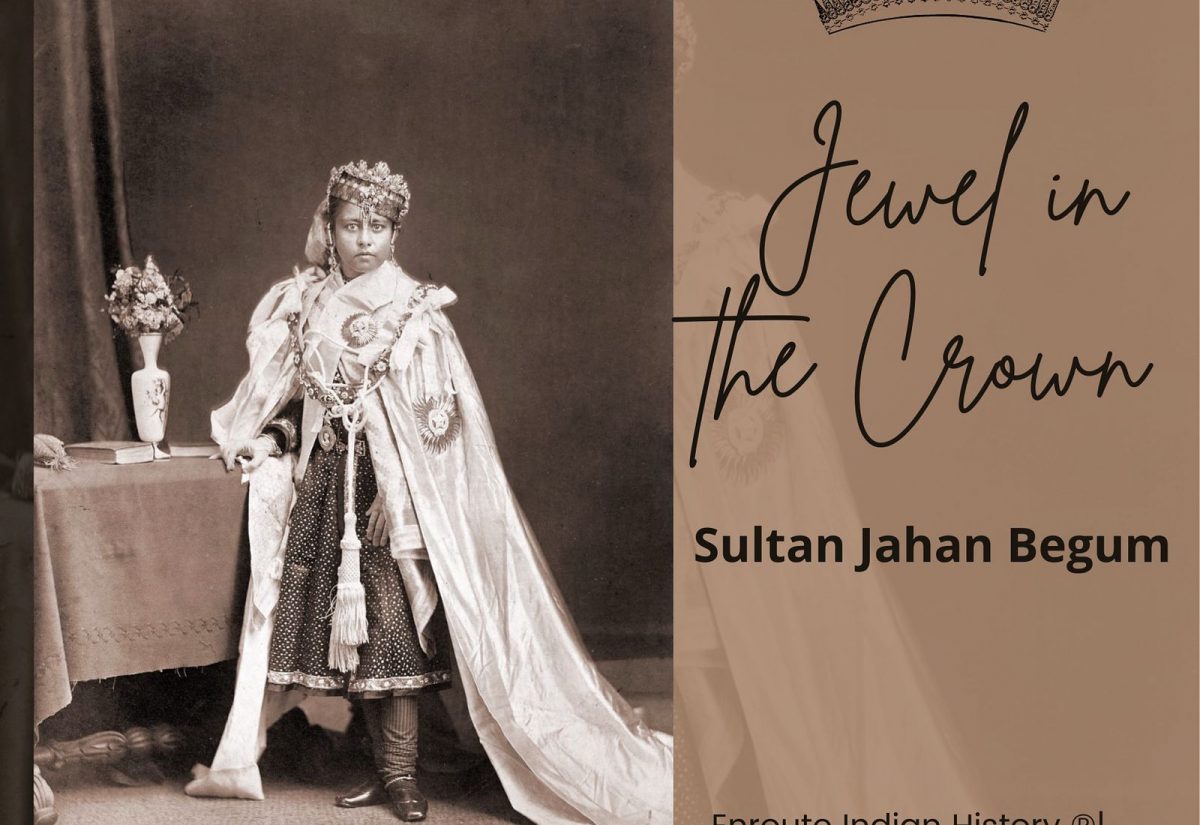
Article by EIH Researcher and Writer
Akansha Sengupta
The begum’s of Bhopal were known for thwarting social norms, fighting societal prejudices, and shaping their own destiny. Under them, Bhopal flourished under their leadership and emerged as a bustling center of trade and commerce. Between 1819 and 1926, Bhopal was ruled by four strong women who navigated through scheming men who wanted to overthrow their claim to the throne. Bhopal became the only princely state with four generations of successive female monarchs. Sultan Shah Jahan Begum holds a special place in the history of India, particularly due to her contribution towards the development of art and architecture, she patronized some of the most magnificent buildings in the city. Like her namesake, Mughal emperor Shah Jahan, she was also heavily invested in building grand monuments, it is interesting albeit disappointing to see how one is revered while the other remains forgotten in history. Nawab Sultan Jahan Begum succeeded her mother in 1901 becoming the 12th Nawab of Bhopal and the fourth female monarch of the kingdom. Following in her mother’s footsteps, she wished to establish cordial relations with the Raj and hence commissioned a grand darbar hall in honor of the then Viceroy of India, Lord Minto. Lord and Lady Minto laid the foundation stone of the darbar hall and the opulent building was named after them.
Shah Jahan Begum was a pivotal figure in Indian feminist history, the monarch retired from purdah and facilitated state affairs. She was incredibly diplomatic and was well aware that being on good terms with the British would benefit her state. However, she was a staunch supporter of the Aligarh movement, this stemmed from her commitment to education, the begum had founded two girls’ schools and built up to seventy-six primary schools. She donated 10,000 Rupees for the construction of the university and often extended support to Sir Syed Ahmed Khan’s vision. The royal family periodically donated to the university funds and the begum was appointed as the chancellor of the institution. Presiding over the first convocation of the university, she said, “We meet today to celebrate the First Convocation of our University, the fruit of fifty years of our national exertion and aspirations. To the pioneer of this movement, Sir Syed Ahmad Khan, Mohsinul Mulk, and Viqarul Mulk, who first saw the vision of a common and united center of Muslim culture, and who devoted their lives to its realization, the nation owes a great debt of gratitude. Great would have been their happiness to see their efforts crowned with success.” Her vision was to bring Bhopal to the pinnacle of development and this could only be possible through education and widespread reform. The Aktar-e-Iqbal chronicles her reign from the 8th to the 12th year on the throne, in the book she stresses on educating the girl child time and again. Page 179 of Aktar-e-Iqbal reads, “The most important thing for women in India is to provide them with educational opportunities. So, it was planned to establish a college for both Hindu and Muslim girls to educate them according to their requirements.”
The Begums of Bhopal were known for being secular, they were progressive and patronized modernity. They did not let the British policy of divide and rule dictate the way they conducted their affairs, their reign was marked by benevolence and piety. She also constructed England’s first mosque in 1889. This was also a period when the British were looting India of its rich heritage, from stealing jewels and gemstones from monuments to taking away parts of opulent architecture to decorate their gardens, they were on a looting spree. The begum was miffed at this attitude of theirs, hence, she suggested that they take plaster cast copies of the Sanchi stupa to display in their museums, instead of carrying the original gates away. John Marshall, the director-general of ASI wrote large volumes of the stupa at Sanchi and dedicated it to the Begum, while she funded the publication of his work.
The Begums of Bhopal took the state to its zenith, sowed seeds of modernity, and inspired many. They were all reformists and shattered the pillars of patriarchy in their own unique ways. They rewrote women’s history, especially that of Muslim women in a very divided colonial India.
Bibliography:
- A History of the Princely State of Bhopal
- https://indianculture.gov.in/stories/begums-bhopal-107-years-golden-reign
- https://www.amu.ac.in/halls/begum-sultan-jahan-hall
- https://www.thestatesman.com/india/how-shah-jahan-connects-bhopal-and-delhi-1502790257.html
- https://economictimes.indiatimes.com/magazines/travel/fascinating-bhopal-city-of-begums/articleshow/6905394.cms?from=mdr
- Aktar-e-Iqbal, Pg 177-232


















